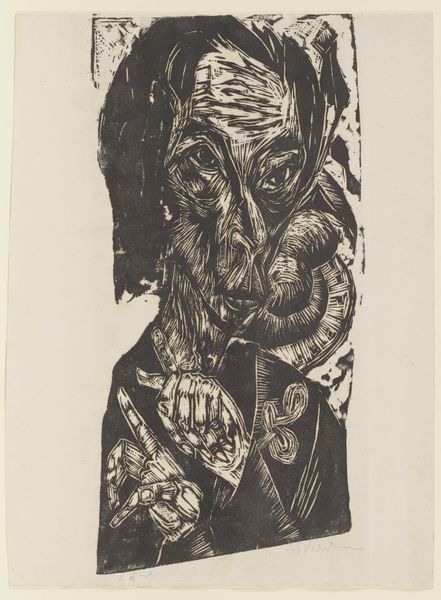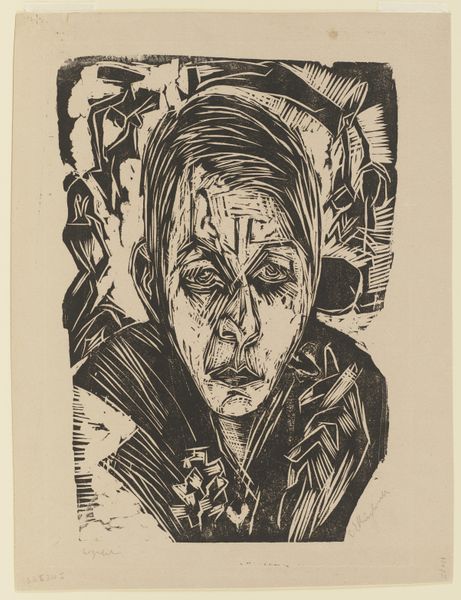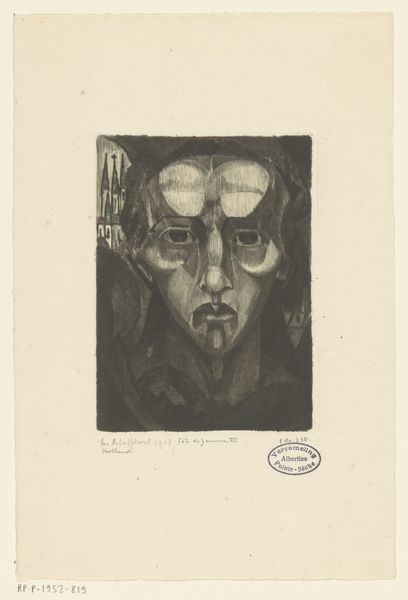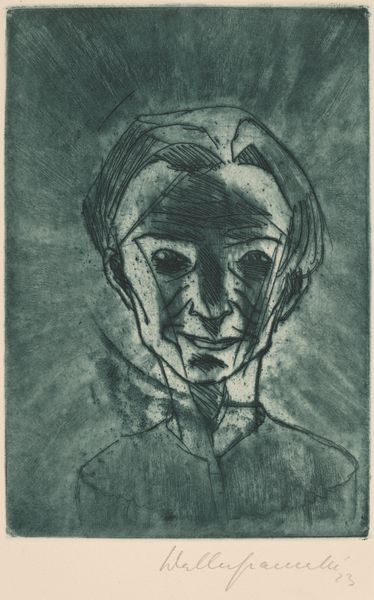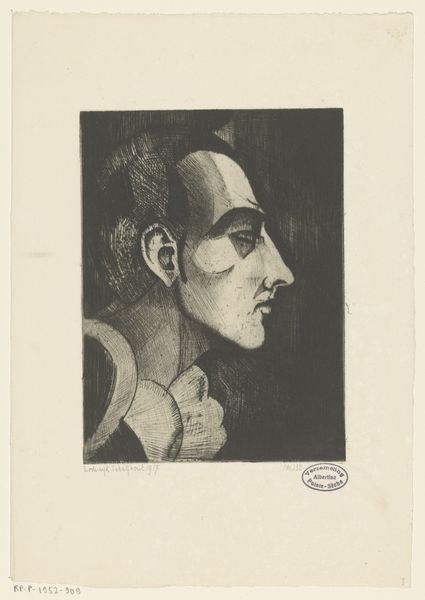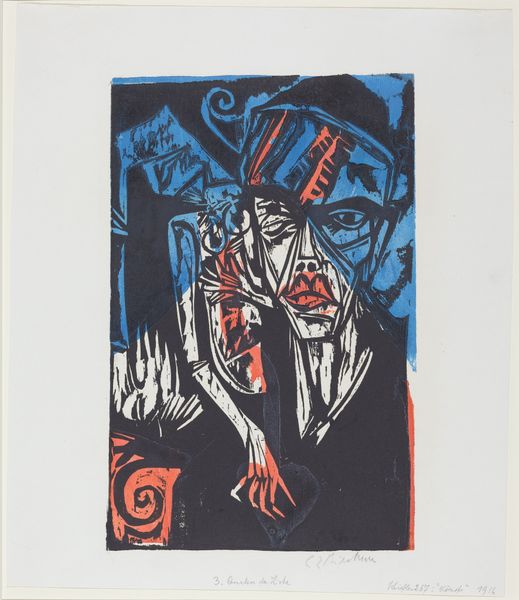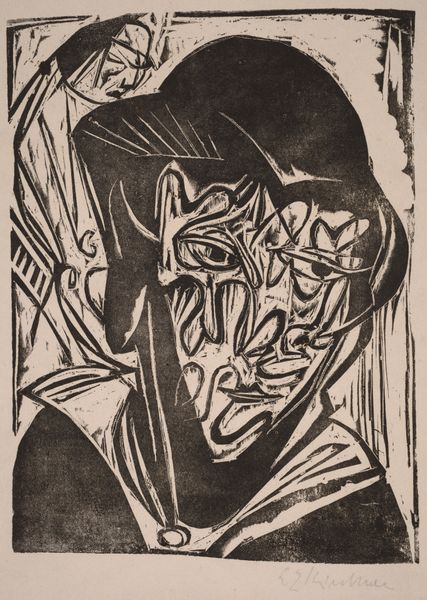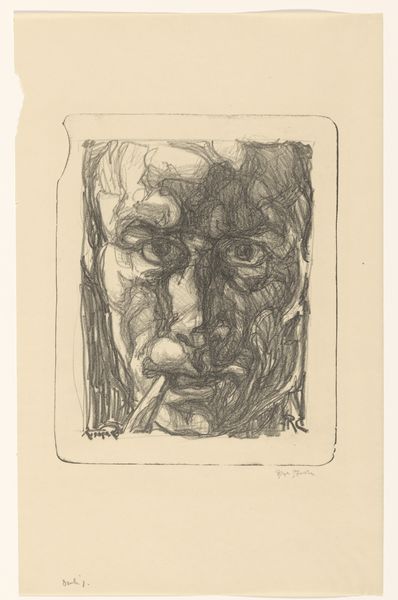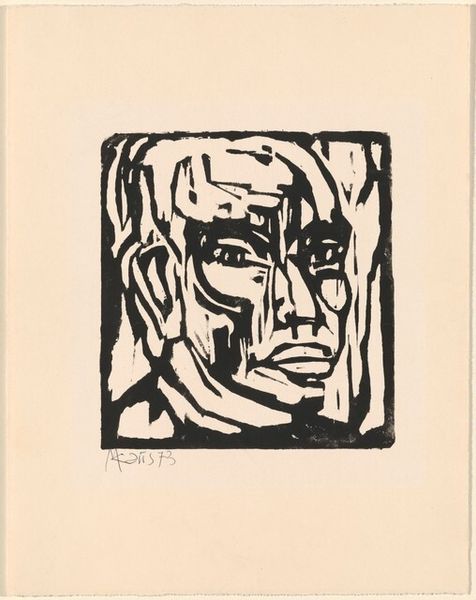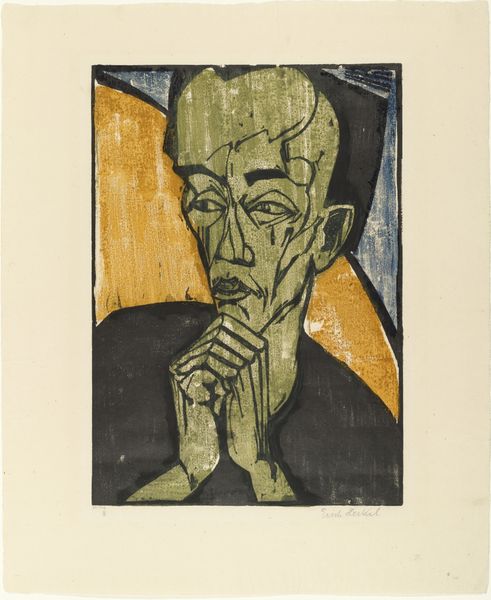
drawing, print, woodcut
#
portrait
#
drawing
# print
#
caricature
#
pop art
#
german-expressionism
#
expressionism
#
woodcut
#
portrait art
Copyright: Public Domain
Editor: Right, next up we have Ernst Ludwig Kirchner’s woodcut, “Blonder Maler. – Bildnis Karl Stirner,” from 1919. There’s such a stark, almost aggressive feel to the linework, especially in that fiery red portrait against the cool blue. What’s your take on this, particularly regarding its historical context? Curator: This print speaks volumes about the artistic climate in post-World War I Germany. Kirchner, along with many Expressionist artists, grappled with the psychological impact of the war, the collapse of the German Empire, and the rise of new social orders. How might this socio-political turmoil have shaped the raw, unsettling aesthetic we see here? Editor: It's like he's intentionally distorting the subject, reflecting a society that felt equally distorted and fractured. The sharp angles and contrasting colors could be visualizing the chaos and disillusionment of the time. Curator: Exactly! Consider how the use of woodcut, a traditional printmaking technique, is subverted here. It’s no longer about delicate detail; it’s a tool for expressing visceral emotions and anxieties. It served a critical social function, offering commentary on the rapidly changing cultural landscape. How might Kirchner be challenging the conventional role of portraiture itself? Editor: I guess he's pushing back against traditional ideals of beauty and representation. Instead, he’s presenting us with a more honest, perhaps uncomfortable, depiction of the individual within a turbulent society. The political IS the personal, right? Curator: Precisely. By understanding the artwork's creation, dissemination and reception within a historical frame, we uncover the intertwined connection between art, artist, and society. Editor: I see the image so differently now. It's not just a portrait, but a visual representation of a society in turmoil, filtered through Kirchner's experience. Curator: Indeed. And art helps us remember it and discuss it in different voices.
Comments
No comments
Be the first to comment and join the conversation on the ultimate creative platform.
